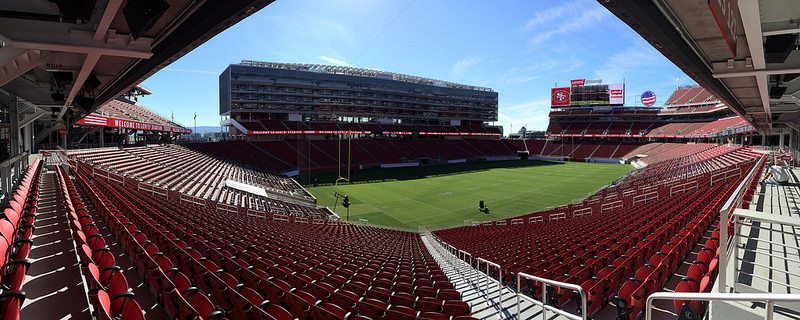
Crefit: cjmartin via Foter.com/CC BY
Sprint and Nokia on Friday conducted a 5G demonstration at Levis Stadium in Santa Clara, Calif. during a Centennial Copa America soccer event, delivering live 4k video streaming and virtual reality experiences at speeds of up to 2.3 gbps.
According to Nokia, the tests were performed using a live millimeter wave system running at 73 GHz. Sprint said the demonstration utilized beam switching, which is a method that allows a system to track a device and select the best antenna to send signals to its targeted location. Sprint said the test also included support for “dynamic TDD – the ability to adjust in real-time the allocated capacity for downlink and uplink traffic based on network demand.”
In addition to providing speeds of up to 2.3 gbps, Nokia said the 5G system also supported spectral bandwidth of 1 GHz and one way air interface latency of about one millisecond.
Nokia said the tests showed the high bandwidth capabilities of 5G technology. The companies also demonstrated the performance characteristics of millimeter wave propagation through different building materials using obstructions including various types of window panes, Sprint said.
“This demonstration of 5G capabilities is one of several steps we’re taking to bring 5G capabilities into field trials,” Sprint CTO John Saw said. “We look forward to leveraging our deployment experience and working closely with Nokia to expand the use of 2.5 GHz and higher band spectrum as we evolve to 5G.”
A second test at Levis Stadium is scheduled for Monday, June 6, Nokia said. However, Sprint’s 5G demonstrations won’t end there.
The carrier is also planning 5G tests in collaboration with Ericsson at Lincoln Financial Stadium in Philadelphia, Pa., on June 9, 11 and 14.
Sprint’s tests with Ericsson will utilize just one experimental 5G base station and one piece of experimental 5G mobile device running on spectrum in the 14.5 GHz to 15.35 GHz range. The base station and mobile unit will be kept within 50 feet of each other during the testing, Ericsson said.



